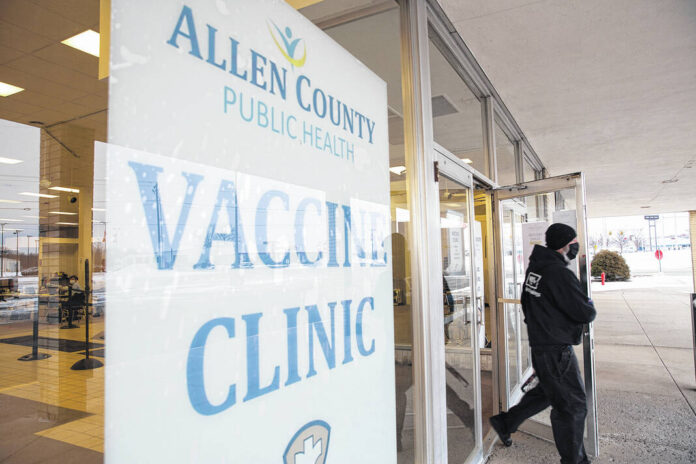LIMA — Allen County Public Health, once so overwhelmed by COVID-19 that it redirected most of its employees to assist with the pandemic response, has transitioned to a more targeted effort: monitoring nursing homes and other places where those at highest risk for severe illness may be exposed to the virus.
Work that once took 70 employees at the pandemic’s peak is now overseen by a dozen or so staffers, who assist with data entry, vaccinations, education and case monitoring on an as-needed basis.
“We’re in a much different place than we were back then,” said Brandon Fischer, Allen County health commissioner, “but we’re still responding to the most significant locations for populations at higher risk and trying to reduce some of those negative impacts.”
It’s “an education campaign,” Fischer said.
The Biden administration is ending its public health emergency declaration for COVID-19 May 11, and with it a variety of pandemic-era programs that made vaccines more accessible and expanded eligibility for public benefits.
But the end of the federal emergency won’t change much for local health departments, which started shifting their response to focus on the highest-risk places as more people gained immunity to the virus that causes COVID through vaccination or prior infection.
In many cases, that means monitoring outbreaks in nursing homes, assisted living and other health care facilities where people with weakened immune systems reside—and where having too many workers out sick at once can put residents in danger of preventable infections or falls.
“We’ve been able to shift staff back into their regular duties,” said Oliver Fisher, the Auglaize County health commissioner.
That’s a relief for Fisher, who said the Auglaize County Health Department couldn’t offer routine immunizations or WIC home visits early in the pandemic because health department staff were too busy with case investigations.
“It’s great to be able to offer those services again to our county residents,” Fisher said.
But because the virus that causes COVID-19 is so contagious, responding to an outbreak is “taking a lot more work than if you’d have one or two cases of flu in that facility,” Fischer said.
“You still have unanswered questions and confusion over what’s changed from the initial guidance to the current guidance,” he said.
Ohio ended its public health emergency in June of 2021 amid politicized debates over the state’s response to the pandemic, limiting the ability of health departments to issue mandatory quarantine orders or require masking in public places.
The end of the federal public health emergency will primarily effect access to other pandemic programs, such as continuous Medicaid enrollment and insurance coverage for rapid and at-home tests. To avoid unexpected costs, Fischer said people who want at-home tests available should purchase the kits before the emergency ends May 11. He also added that the health department’s response to COVID will continue after the emergency officially ends on May 11.







